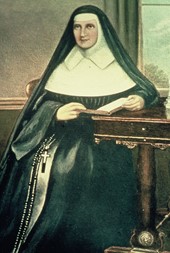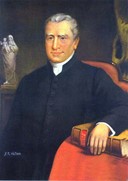College History
Aranmore Catholic College was founded on its present site in Leederville in 1903 by two Sisters of Mercy, Mother Berchmans and Mother Aquin, who originally established a co-educational school known as Our Lady of Perpetual Succour School, Arranmore. Mother Berchmans, who was from an island off the west coast of Ireland called ‘Arranmore’, named their new convent house at the corner of Marian and Shakespeare Streets, ‘Arranmore’. The first student, Sophia Hudson, was joined by 12 boarders a few years later and after a period of time, the school was called St Mary’s and educated both boys and girls to sixth standard and girls only in high school.
In 1942, a high school for boys, called Christian Brothers’ College Leederville, was founded by the Christian Brothers. For over 40 years, the two schools operated separately but side by side. To meet the growing demand for places and to enable more educational opportunities for students, the two schools amalgamated in 1986 and officially became Aranmore Catholic College. The first Principal of Aranmore was Brother Kevin Paull and the first Deputy Principal was Sister Joan Buckham.
OUR FOUNDERS
Venerable Catherine McAuley
When Catherine was 25, a retired couple (wife a Quaker and husband a Protestant) invited her to live with them. On their death beds, they converted to Catholicism, and bequeathed their estate to her. With this inheritance, Catherine built a house on Baggot Street in Dublin which began as a home for poor girls. This first Home of Mercy opened on 24 September 1827, the Feast of Our Lady of Mercy. Her work with the poor and destitute led Catherine to desire a life of total consecration to the Lord.
Encouraged by the Archbishop, Catherine and two other women professed vows on 12 December 1831 and began the Religious Institute of the Sisters of Mercy. By the time of Mother Catherine’s death in 1841, there were 100 Sisters of Mercy in 10 foundations.
In April of 1990, on completion of one stage of the process by which the Catholic Church defines sainthood, Pope John Paul II declared Catherine McAuley “Venerable”.
We draw on the inspiration of Catherine McAuley, the foundress of the Sisters of Mercy. Catherine’s deep faith in God, who is mercy, and her experience of pain and of poverty, shaped her prayer and in turn her prayer shaped her ministry.
“Mercy....the business of our lives” - Catherine McAuley.

Blessed Edmund Rice
By 1795, Edmund was a wealthy man while his fellow Catholics were, by contrast, living in poverty, with no education and no hope for their own future or that of their children. Enlightened by the Holy Spirit, Edmund Rice had come to believe that even the poorest and least educated person was the temple of the Holy Spirit and that Christ dwelt in him or her. He resolved to sell what he had and to spend his wealth in the mission of educating poor and needy children. Meanwhile he committed himself to follow Christ in a life of consecrated service to Him.
In 1802 he held his first classes in converted stables in Waterford. A year later he moved to his first permanent school, built at his own expense, in Waterford, and named Mount Sion.
In 1820 Pope Pius VII recognised as a Religious Congregation the group of men who followed in the footsteps of Edmund Rice. They were called the Christian Brothers.
On 29 August 1844 Edmund Rice died at Mount Sion. He was proclaimed Blessed Edmund Ignatius Rice on 6 October 1996.
Edmund Rice set his mind to a mission that was radical indeed - it wasn’t just handouts of food and clothes or special kindnesses to exceptionally needy families. It was equipping young people mentally, morally and religiously to stand on their own feet and change their lives for themselves and in time, to struggle for change in the society that caused and allowed them to be poor.



